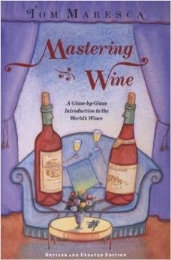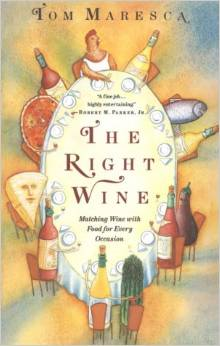This is my final post for 2021. It presents the last of my 12 special cellar selections for the year, Quintarelli’s 1981 Amarone. What a spectacular series it turned out to be!
.
When I got this Amarone, somewhere back in the middle ‘80s, I remember thinking that I would have to put it away for a while. I’m pretty sure that I was thinking that the “while” in question would be about 5 years, or maybe, since this was a Quintarelli, 10. I’m sure I had nothing like 40 years in mind. That just happened, as year after year I considered tasting the wine and decided to give it a little time yet, until this particular Amarone got pushed back into the Do Not Disturb portion of my brain, and there it stayed for a few decades.
At last its moment came round, and I was worried alternatively that I had waited too long and that I was still rushing it.
 .
.
That’s a legitimate worry when Amarone is concerned. These are notoriously long-lived wines, and in some vintages they can be very slow maturing. 1981 is, I suspect, one of those vintages. In the Veneto that year, the grapes matured very slowly on the vines, so in some spots the harvest was late, and required several passes through the vineyards to bring in the grapes as they came ready. Fermentation was also long and slow. So ‘81 showed itself early as a wine that would demand patience.
You wouldn’t be faulted for thinking 40 years was enough, but I couldn’t be absolutely certain. I’ve opened 20- and 25-year-old Amarones only to find they were years, perhaps decades, away from full maturity: drinkable, of course, because of their intense fruit, but still tasting and feeling like young wines, and lacking the mature, complex flavor I hoped for, as well as the balance, depth, and, above all, the velvet mouth-feel of fully mature Amarone.
To this point, the oldest Amarone I’d drunk was a 47-or 48-year-old Bertani that celebrated my 75th birthday, and I remember it vividly as one of the most profound wines I’ve ever tasted, with flavors and aromas so deep and concentrated they seemed endless. The empty bottle still smelled wonderful two days later: I could hardly bring myself to throw it out.
Quintarelli doesn’t have the history with Amarone that Bertani does, but Giuseppe Quintarelli in his lifetime became an acknowledged master of the wine: A colleague once quipped that Quintarelli was a black belt in Amarone. Some knowledgeable critics still regard him as the greatest winemaker in the history of Amarone, and I find it hard to argue with that. The “lesser” wines of his that I’ve tasted — Valpolicella and a handful of IGT wines – have always been impressive, big and rich and deep, with a thoroughly craftsmanlike character: superbly made wines.
That latter characteristic is crucial, I think, because Amarone, like Champagne, is an oddity in the universe of wine: It is a wine that owes more to technique than to terroir, more to art than to nature. You start with the late harvest and the number of passes through the vines the winemaker chooses to make. Compound that with the degree of noble rot the winemaker encourages/discourages/prohibits. Then add in the timing of drying and pressing the grapes, and the choice of vehicle in which fermentation occurs. Then whether he does or doesn’t permit malolactic fermentation, plus all the subsequent decisions about handling and aging the wine.
All these craftsmanly decisions affect the wine in more profound ways than its terroir does. All are the techniques of an artist whose chosen medium is the juice of grapes and the wood of barrels. Those appassionati who pursue Amarone are winemakers in the most profound sense, and the resulting wine reflects their skill and artistry more significantly than it does the character of the grapes that go into it. Champagne is the only other wine I know of which you can say that.
Well, the moment of truth arrived, the cork was pulled, the wine was poured, swirled, sniffed, and tasted. The immediate results: two simultaneous, totally unrehearsed “Wow!”s. No kidding: off the scale.
Here are my first five words about its aroma: honey; raisins; prunes; chocolate; chestnut. Here is my first tasting note: “all of the above in velvet!” This was simply an amazing wine, of elegant power, depth, and duration. It rolled right over foie gras and barely noticed a rich, fruity, pan-roasted duck. I find it hard to imagine a dish that would challenge it – perhaps high-mountain game, like chamois? This wine was wonderful, still fresh and rich, and simultaneously complex and deep. It is unlike any other Italian or French wine I know, and made a powerhouse conclusion to my 12 cellar selections for the year.
For those who may be curious, here the other 11, in the order tasted, each name linked to my post about it. There is a lot of fine drinking here. In all honesty, I’m not sure what I learned from the whole endeavor, except confirmation that I love mature wine, and that it is well worth the effort of putting some bottles away for your own and their old age.
Happy New Year to all my readers, and many of them to come!
.
January
2011 Sabbie di Sopra Il Bosco, Terre del Volturno IGT, Nanni Copé
February
2001 Costa Russi, Langhe DOC, Angelo Gaja
March
2001 Hermitage AOC, E. Guigal
April
2004 Monprivato Barolo DOCG, Giuseppe Mascarello e Figlio
May
2009 Campi Raudii, Vino Rosso, Antonio Vallana
June
1975 Gruaud Larose, Grand Cru Classé Saint-Julien, Cordier (then)
July
2007 Vintage Tunina, Venezia Giulia IGT, Silvio Jermann
August
2003 Montevetrano, Colli di Salerno IGT, Silvia Imparato
September
2001 Corton Grand Cru AOC, Bonneau de Martray
October
1989 Cuvée Frédéric Émile Vendanges Tardives Riesling, Alsace AOC, Trimbach
November
1996 Barolo Riserva DOCG, Giacomo Borgogno & Figli







